Maybe you would say a tiling project is nothing but preparing the surface, arranging the layout, concocting the right adhesive, laying the tiles and grouting the surface. Surely, plenty more issues need to be focused during the installation, and to make out the important notes of how to cut tile properly is one of the essentials, for you will very likely get a disastrous result if the tiles are cut badly.
In fact, tiling is simple if just tiling a complete tile. It is kind of like pasting things on the paper, just object, substrate and adhesive different. Certainly I am saying a little bit exaggerating but it is honestly easier than laying fragmentary tile, which is often cut to meet the irregular surface where ceiling or flooring join the walls, and around corners, doors, windows, mirror, wash stand, etc. Although some cutting edges can be hidden with grout, most of them will be obvious at the junctions of facets. Especially in the places like backsplash tile for kitchen need to be cut nice and fit the intersection around oven, ventilator and other kitchen utensils. From the craft can see how skillfully you have done the tiling. Accuracy is the basic element of a delicate tiling project. It is much needed when the project is involving DIY, puzzle-type and tailor-made tiling. So if you are deciding not to hire a tiler and do the work all by yourself you need to learn how to cut tile professionally. If aspired to be a talented DIY tiler, click the link for inspiring article How To Cut Different Shapes In Ceramic Wall Tiles from practicaldiy.com, you can get a lot of practical tips. Whilst MM-Mosaic will give you some hints about what you might ignore in the cutting.
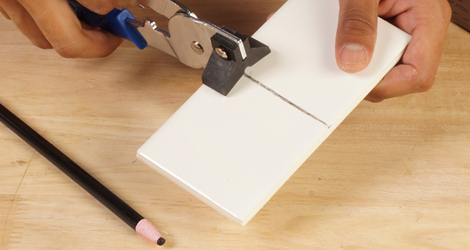
Choosing a right cutting tool is a key start unquestionably, but laymen seldom know how to select the most suitable. In fact, the tool is determined by the materials that you are going to cut. Nowadays, more and more people prefer using porcelain than ceramic as building material due to its superior performance in water absorption, hardness and wear resistance. And natural materials like stone and marble are gaining popularity in construction industry, in that way, simple cutting tools are no longer satisfying the needs. The trend is that more and more people would love to use materials that are durable, in other words, those are hard to cut and break, to decorate their dwellings. So one thing you can make very first sure is that you need an electric tile cutter which is capable to cut most architectural things. But another question is – what the specific type? There are many in the market, diamond cutters, angle grinders…To make a right decision is a little bit hard but if you don’t want to spend too many new tiles for experiment, choosing a right cutter is necessary. Also, cutting can be a process of trial and error so it is usually preferential to hire one than buy one. In this way, you can try the tiles out with different cutters according to the hardness and thickness. It is a method particularly good for tiling project that is several kinds of tiles combined. If feasible, consult and ask help from a tiling professional, tiling tool store or rental outlet.
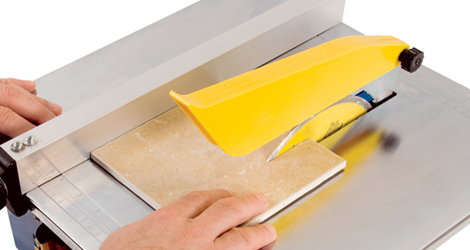
Now go for the first step – measurement. Measure the surface you are going to tile, which has been separated into several sections. These often are the “complete” sections, which only consist of complete tiles. In other words, these are the sections excluding corner and joint places that need to be covered with fragmentary tiles. Measure and mark the place you are going to cut on the back of the tile, and remember not to use felt tip pen as it might discolor the grout. Before cutting, you should check twice to ensure the shape right for the filled-up space. Some of the tiles are cut curved at the edge just following the shapes of crooked corners or joints.
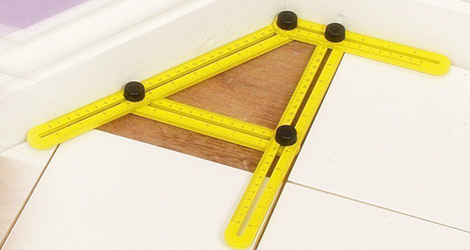
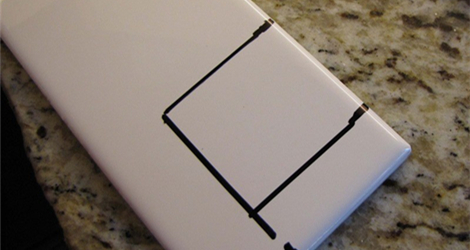
Then go for the second – cut. A lot of people may spare themselves the trouble hiring the most suitable cutter and just use angle grinder to cut the materials that they think are the relatively soft, like some natural stones. Still, a better choice is an electric cutter as MM-Mosaic mentions in the foregoing paragraph. But sometimes the cutting edge of the tile might break even with a right cutter. If you are supposing that will happen then cut partly from the two sides of the tile and completely divide it in the middle. One more reminder – you can wind up the cutting with a manual tool like tile saw or nibbler to make a more perfect tile edge. And remember always start from the shown surface (often the glazed surface) and cut the tile downwards only. This will save the tile from jags and unsmooth edge. As for curved edge, use electric cutter to cut as much as the unwanted part before making delicate trim by using manual tool. Perfectionists often ask for the best, so it is the cutting craft. However, the shapes of tile are honestly hard to cut exactly the same with that of the joints and corners. And in most cases, grout can make up the odd gaps. So don’t be entangled when you find your cutting is not “perfect”.
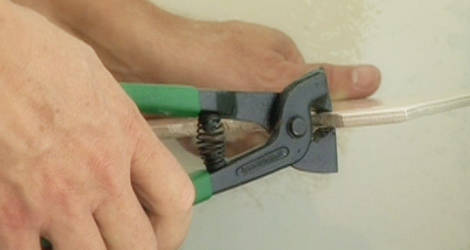
The type of tile plays a significant role in the selection of cutting tool and the finished look of your tiling project. Generally, ceramic tile are the easiest while porcelain and some stone tiles are the hardest. Remember choosing cutters based on what materials you are going to tile and ask more tips from the professional if permits.